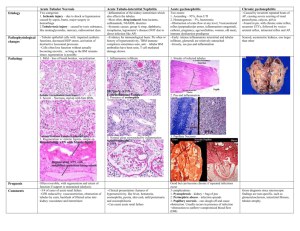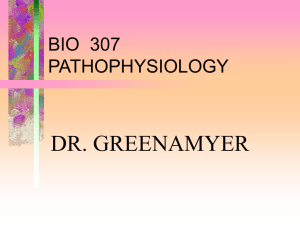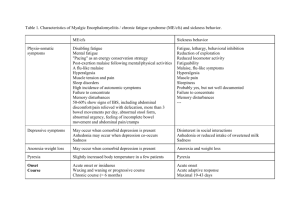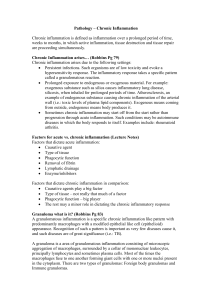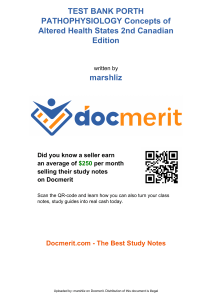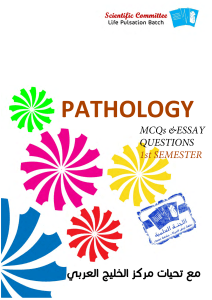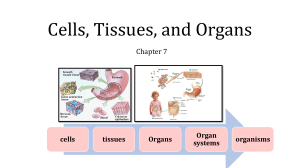ppt
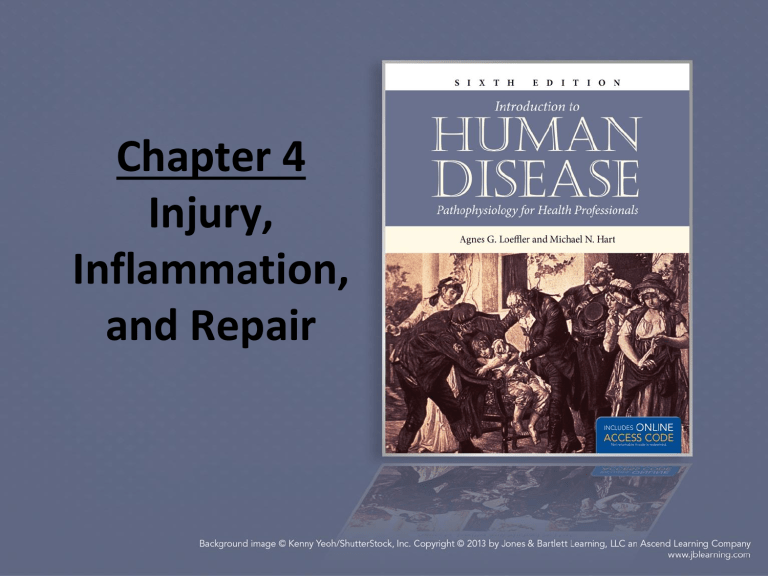
Chapter 4
Injury,
Inflammation, and Repair
Review of Structure and Function
• The body is capable of undergoing dynamic changes to carry out body functions.
• Each component of a cell carries out a specific, necessary function.
Major Cell Types
• Epithelial cells
• Connective tissue cells
• Nerve cells
• Muscle cells
Events Following Injury
• Necrosis or sublethal cell injury
– Death or damage of cells due to injury
• Inflammation
– The vascular and cellular response attempting to limit damage and remove necrotic tissue
Events Following Injury
• Repair
– The body’s attempt to replace dead cells
Necrosis vs. Sublethal
• Necrosis is the irreversible death of the cell
• Sublethal injury indicates the cell is capable of at least some recovery.
Acute Injury and Necrosis
• The most common cause of acute injury is a reduced level of oxygen.
• Cells that are very active require more oxygen, and will suffer ill effects first.
• Localized hypoxia due to poor blood flow (not decreased oxygen levels) is called ischemia. If this becomes more severe, ischemia progresses to infarct.
Causes of ischemia or necrosis
• Thrombus
• Embolus
• Trauma
• Infections
Causes of ischemia or necrosis
• Immunologic Reactions
• Coagulation, liquefaction, caseous, gangrenous, and enzymatic fat necrosis
Chronic Injury
• Chronic injury may cause atrophy or accumulation of material within cells.
• Atrophy
– Senile
– Disuse
– Pressure
– Denervation
– Endocrine
Chronic Injury
• Accumulation
– Fatty Change
– Adiposity
– Glycogen Storage
– Hyaline
– Metastatic Calcification
– Hemosiderosis
– Hemochromatosis
Acute Inflammation
• Vascular response: Increased blood flow to the injured area, and the vasculature becomes more permeable.
• Cellular response: Movement of leukocytes, predominantly neutrophils and monocytes from the blood into the tissue.
Chemical Mediators
• The inflammatory reaction is initiated by local factors in the injured tissue
• Histamine
• Vasoactive amines
Chemical Systems
• There are three chemical systems at work together during the inflammatory reaction
– Kinin system
– Complement system
– Coagulation system
Chronic Inflammation
• Chronic inflammation causes histologic changes different from acute inflammation.
Granulomatous Inflammation
• Characterized by focal collections of closely packed, plump macrophages, it is in response to indigestible organisms.
• The object is too large to be broken down, so macrophages engulf the offender to keep it from moving elsewhere.
• Examples include: TB, fungal infections, and sarcoidosis
Transudates and Exudates
• Transudate
– Caused by increased hydrostatic pressure or decreased osmotic pressure
– These have a low protein count
• Exudate
– Caused by increased oncotic pressure
– These have a high protein count
Repair
• Regeneration
– This is the desired repair, as replacement of destroyed tissue is with similar tissue, and normal function is restored.
Repair
• Fibrous connective tissue repair
– This is less desired, as the damaged area is replaced with fibrous tissue, and normal function is not restored.
– The goal of this repair is to provide a bridge across the damaged area.

